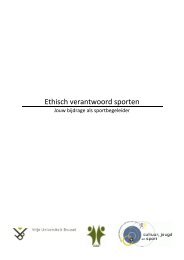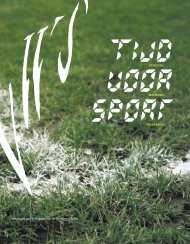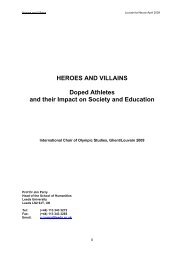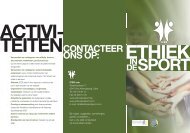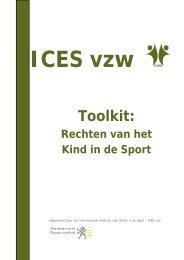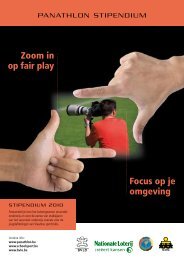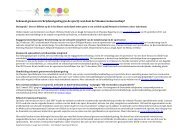Part 3 GLOBAL ISSUES: HARASSMENT AND ABUSE RESEARCH
Part 3 GLOBAL ISSUES: HARASSMENT AND ABUSE RESEARCH
Part 3 GLOBAL ISSUES: HARASSMENT AND ABUSE RESEARCH
Create successful ePaper yourself
Turn your PDF publications into a flip-book with our unique Google optimized e-Paper software.
more likely to be harassed and/or abused and it was mostly males who were<br />
perpetrators. The reports were extremely disturbing, revealing patterns of<br />
systematic sexual harassment and abuse of athletes, often by authority<br />
figures in sport.<br />
Although sexual harassment and abuse was often regarded as an<br />
issue for girls and women, the study also revealed a concern amongst boys<br />
and men. The harasser is most often male, the victim most often female.<br />
However, there was also evidence of harassment by a member of the same<br />
sex, or of a female harassing a male. The types of harassment and abuse that<br />
athletes experienced were varied, including put-downs and insults, sexually<br />
suggestive comments, being made afraid (of losing a place on the team, of<br />
being identified as of sexual interest, and of having to give sexual access to<br />
another). Perhaps the most disturbing finding was that 21.8% of athletes<br />
reported having had sexual intercourse with a person in a position of authority<br />
over them in sport. Not surprising was that most authority figures were older<br />
than the athletes, but 8% of these older people were more than 20 years older<br />
than the athlete in question. On this point, we must underline the all-important<br />
issue of consent, i.e. it is not consent if an athlete agrees to sexual activity<br />
with someone who is in authority over them. Indeed, the Canadian Code of<br />
Ethics for Coaches prohibits such activity until the person in authority has<br />
been out of that sphere of influence over the athlete for a substantial period of<br />
time.<br />
Athletes reported other unwanted sexual experiences in sport, such as<br />
those behaviors which occurred in a poisoned or ‘chilly climate’ of sport.<br />
These included: coaches’ and other athletes’ use of profanity or trash talk;<br />
constant attention being paid to one’s physical, social or sexual attributes;<br />
and/or a homonegative environment for gays and lesbians. Additionally, there<br />
were athletes who reported receiving obscene phone calls (4.1% of athletes;<br />
to younger athletes p.



